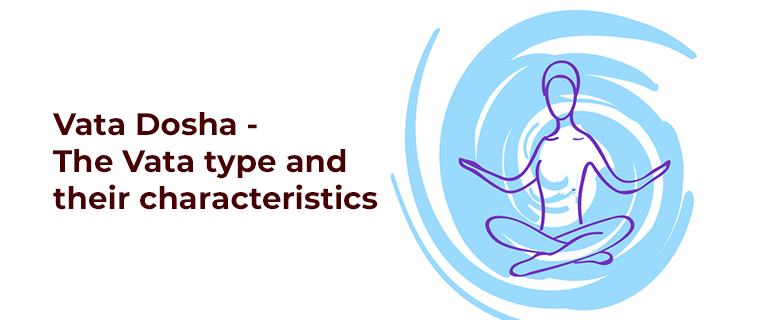
Vata Dosha – The Vata Type and their Characteristics
Ayurveda believes that all of us are born with a specific Prakruti which is an outcome of the interchange between the tridoshas that are present in each of us. A certain proportion between Vata, Pitta and Kapha regulate our overall well being, be it physical, emotional or mental.
What is vata dosha?
Of the tridoshas, Vata dosha (that contains the elements of air + space) is the form of energy that is the most important of all tridoshas as it controls all the movement (microscopic cellular + macroscopic level) across our nervous system, blood circulation, respiration etc.
Vata dosha is divided into 5 sub types namely
- Pranavayu (forward moving air) – It is the life force that controls the respiratory system inflow.
- Samanavayu (balancing air) – Is responsible for the entire movements in the digestive system which occur during digestion, metabolism and assimilation.
- Vyanavayu(all-pervading air) – Permeates the entire body and is responsible for blood circulation and providing nourishment to the body
- Udanavayu(upward moving air) – Primarily controls the respiratory system outflow.
- Apanavayu(downward moving air) – Mainly responsible for flushing waste matter. Treatment of vata dosha is centered around apana
When the Vata dosha is in balance, so are the movements of Pitta dosha and Kapha dosha, it is therefore vital that the Vata dosha in our body stays in equilibrium.
-
Vata dosha characteristics
- Vata dosha is cold, light, dry, rough, fluid, variable and quick
- People who are governed by the Vata dosha are creative, energetic, quick to remember but also quick to forget. They have cold hands & feet, are generally slim, have delicate bone structure, dry skin, unpredictable appetite and digestion
-
How to balance Vata dosha?
- Stay warm, don’t stress
- Ayurvedic massage such as Abhyanga helps balance Vata dosha
- Ayurveda Diet for Vata dosha should include foods that are sweet, sour, salty as well as oily and rich foods that balance the dosha
- Avoid bitter, astringent, and spicy flavors cold foods as they aggravate the vata dosha
- Regular yoga, meditation and physical exercise help balance vata dosha





0 Comment
No comments found.Thank you. Your comment will be visible after an approval.
Add your comment